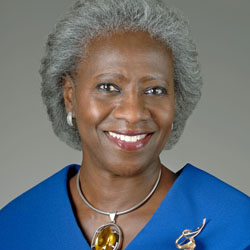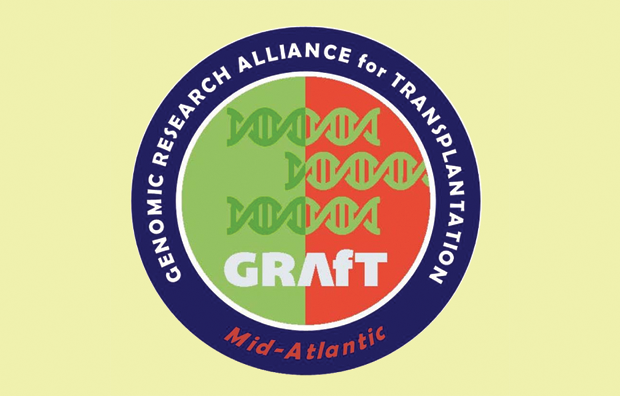The first spark of my desire to become a cardiologist came, believe it or not, in a third-grade art class where I was asked to draw and color the circulation of blood as depicted by 16th-century English physician William Harvey. This task enraptured me—seeing that something so beautiful could work so flawlessly. So, many years later, I remain intrigued by cardiac transplantation, the subspecialty in which I ultimately chose to anchor my career as a physician scientist. Each day I live in awe of the fact that you can remove someone’s organ, place it in another, and still have that organ work beautifully, most of the time. But why does it sometimes fail?
Looking at a complex scientific question like this through interdisciplinary team science, as I have done for years, accomplished something else: it provided a foundation for my approach to enhance diversity among scientists in biomedical research. Simply put, I revel in the excitement of developing solutions to complex and ambiguous problems by applying the scientific method through a lens of “opportunity” rather than through that of a “problem.”
A Varied Career Path

I was born in Gambia and had a pretty normal childhood there, but big changes came about when I turned 13. My father obtained a new position in London, and so he and our family (my mother and three siblings) were instantly transplanted to an unfamiliar environment. For the first time in my life, I was visibly different from everyone else. I had moved from a place where everyone looked like me to a high school where I was one of only two students of color. Isolation soon gave way to embracing London’s “swinging 60s” culture—at the expense of my academic success. Thankfully, this method of coping was transient and quickly replaced by a sense of resoluteness by the end of my high school years; eventually, I excelled in school the way I had done in Gambia. While some might argue that the temporary decline in my academic performance was due to an overindulgence in London culture (and my parents surely did), social-science research offers another explanation—the lack of a sense of belonging that triggers a phenomenon known as stereotype threat—which, in turn, leads to diminished performance. Well, that’s my story at least, and I’m sticking to it!
In college and medical school, my interest in cardiology continued to grow, propelled by an unquenchable thirst for research that directly addressed clinical challenges I saw in my patients. After completing cardiology training in London in the 1970s, I accepted a fellowship position at Stanford University with every intention of returning to London a few years later. Acquiring a brief training experience in the United States—otherwise known as getting a “BTA” (or “been to America”)—had become an unwritten rule for career advancement. Yet, in my case, two years morphed into 30 as I took advantage of the phenomenal opportunities Stanford gave early-career scientists like me.
I began by establishing rodent models of heart transplantation that enabled me to test the role of diabetes and lipid abnormalities in the rapid development of cardiac allograft vasculopathy (CAV), the leading cause of death after heart transplantation. In parallel with laboratory-based research, I led several clinical studies that advanced our understanding of the role of cytomegalovirus infection in CAV, ushering in a major paradigm shift in patient care. As a result of my contributions to advancing new knowledge in the field of transplantation, I rapidly rose through the ranks at Stanford and received tenure in 2001.
A few years ago, I brought that research to the National Institutes of Health (NIH) National Heart, Lung, and Blood Institute. I established the Genomic Research Alliance for Transplantation (GRAfT), which is developing and testing genomic-based assays on blood samples for early detection of organ rejection and infection in solid-organ transplant recipients (pictured below). Through this team-based work begun at Stanford, I observed directly how diversity of perspectives and experience drives innovation. Thus, I did not hesitate when invited to create the first Office of Diversity and Leadership at Stanford in 2005 (a position I held for ten years) and then, in 2014, to join the NIH as its inaugural chief officer for scientific workforce diversity, leading efforts to enhance diversity at a national level—a goal that has been elusive for many years.

Challenges for Women in Biomedical Research
Despite enhanced gender diversity in biomedical research over the past two decades, many challenges remain. The stark facts are that in biomedicine, although women receive over half of all Ph.D. degrees and make up 38% of full-time faculty, they constitute only 22% of tenured full-time professors, 16% of deans, and 15% of department chairs [1]. The picture is even grimmer in engineering, where women compose 25% and 20% of graduate students and postdoctoral fellows, respectively, but less than 10% of faculty nationally. While the percentage of women in some subspecialties like biomedical engineering has increased (see the article “Women Break an Engineering Barrier”), these statistics have remained stubbornly constant over the past decade.
Yet I see these numbers less as roadblocks than as opportunities to do more, and the place to start is with unsupportive institutional cultures. As I have previously written elsewhere, strategies to enhance diversity that focus on individuals can enhance the representation of women and other groups. But without attention to institutional change, progress will remain slow, and the gender gap in leadership positions will continue unabated.
Working Toward a More Equitable Future
A promising way forward, backed by solid research, involves integrating methods and policies that aim to shift academic culture and, in turn, improve the representation of women through instigating institutional change. One particularly effective endeavor is the National Science Foundation’s ADVANCE Institutional Transformation awards. In this approach, a consistent requirement is concrete leadership commitment at the highest level, usually from a university president, and supported by coaching, mentoring, and networking for women faculty.
Research has also shown repeatedly that women make less money than men in nearly all careers, including STEM, and in biomedicine receive smaller start-up packages at initial hiring into the professoriate. These differences persist as women advance through the ranks. Overall, across the private and public sectors, female engineers earn about 82% of that which male engineers earn—one of the smaller gaps across disciplines, but a gap nonetheless.
Other drivers of institutional culture that perpetuate the gender gap in career advancement include sociocultural factors such as bias, outmoded work–life policies, and a sense of isolation and lack of inclusion that manifest as stereotype threat. I think back to my London days and remember clearly the isolation I experienced and how it affected my behavior.
Here again, there is no reason to despair, as we can look to research for solutions. For example, although we know that implicit (and, of course, explicit) biases lead scientists to make flawed decisions about hiring, rigorous studies show the efficacy of interventions that mitigate bias. Stereotypes that alter an individual’s sense of belonging in science can be a barrier to performance and productivity, yet interventions to alleviate stereotype threat are effective.
It is also no longer fair or realistic to cite work–life issues as the major impetus for women’s lack of representation in science and engineering. Instead, let’s look to institutional culture as a key culprit. Why must we consider work–life issues career-pausing when we can see flexible schedules as career-advancing, for both sexes? Research shows that flexible work arrangements can improve satisfaction and even performance.
Benefits for All
Expanding workforce diversity, including increasing the representation of women in faculty and leadership positions in science and engineering, has many benefits for the research enterprise: increasing creativity and innovation, broadening the scope of inquiry, narrowing the health gap, and promoting and ensuring fairness. Beyond issues of fairness and social justice, there are other impacts of low representation of women in science and engineering. These include the lack of return on investment from start-up packages when scientists drop out of the workforce prematurely as well as a lack of attention to sex-based and gendered issues in research.
Science has the answer for us, and the data speak to us more clearly than anything else. At the current rate of advancement, it will take nearly 50 years (on average, nationally) to attain gender parity in academic medicine. Can we wait that long? Certainly not. Rigorous research tells us what to do, and we can start today.
References
- American Association of Medical Colleges. The state of women in academic medicine: The pipeline and pathways to leadership, 2013-2014. [Online].
- C. A. Moss-Racusin, J. F. Dovidio, V. L. Brescoll, M. J. Graham, and J. Handelsman, “Science faculty’s subtle gender biases favor male students,” in Proc. Nat. Acad. Sci. USA, vol. 109, no. 41, pp. 16,474–16,479, 2012.
- M. Carnes, P. G. Devine, L. Baier Manwell, A. Byars-Winston, E. Fine, C. E. Ford, P. Forscher, C. Isaac, A. Kaatz, W. Magua, M. Palta, and J. Sheridan, “The effect of an intervention to break the gender bias habit for faculty at one institution: A cluster randomized, controlled trial,” Acad. Med., vol. 90, no. 2, pp. 221–230, 2015.
- C. M. Steele, “A threat in the air. How stereotypes shape intellectual identity and performance,” Am. Psychol., vol. 52, no. 6, pp. 613–629, 1997.
- M. Fassiotto, E. O. Hamel, M. Ku, S. Correll, D. Grewal, P. Lavori, V. J. Periyakoil, A. Reiss, C. Sandborg, G. Walton, and M. Winkleby, and H. Valantine, “Women in academic medicine: Measuring stereotype threat among junior faculty,” J. Women’s Health, vol. 25, no. 3, pp. 292–298, Mar. 2016.



